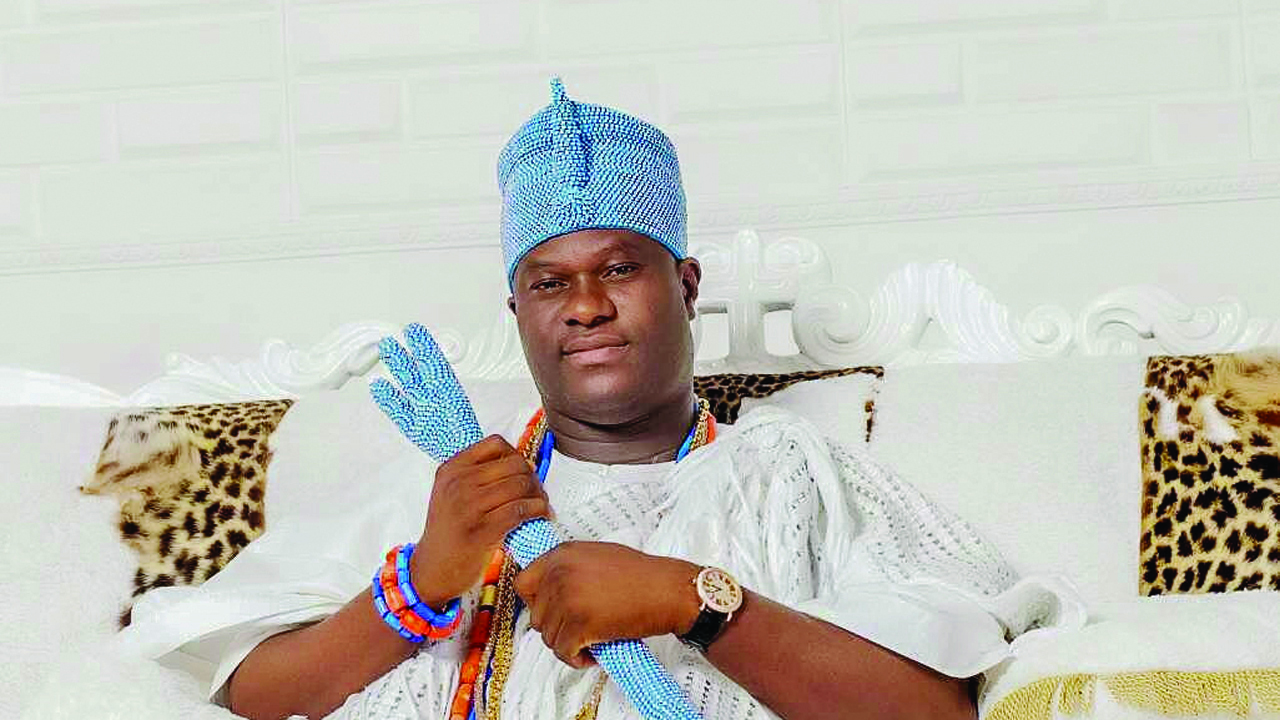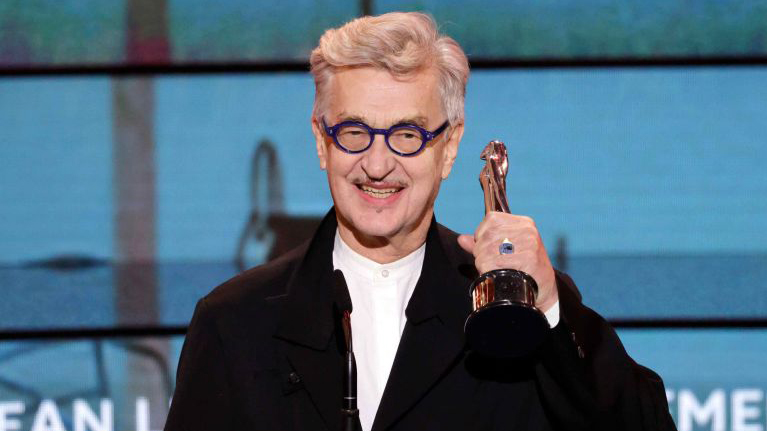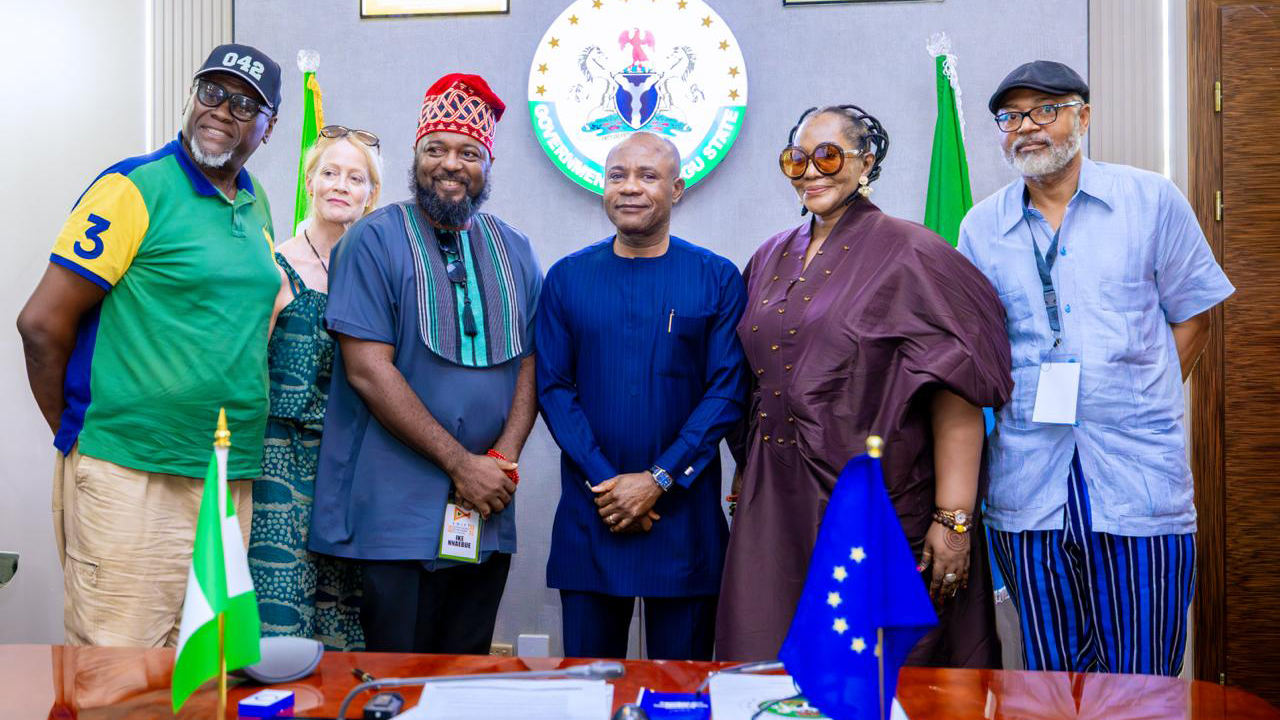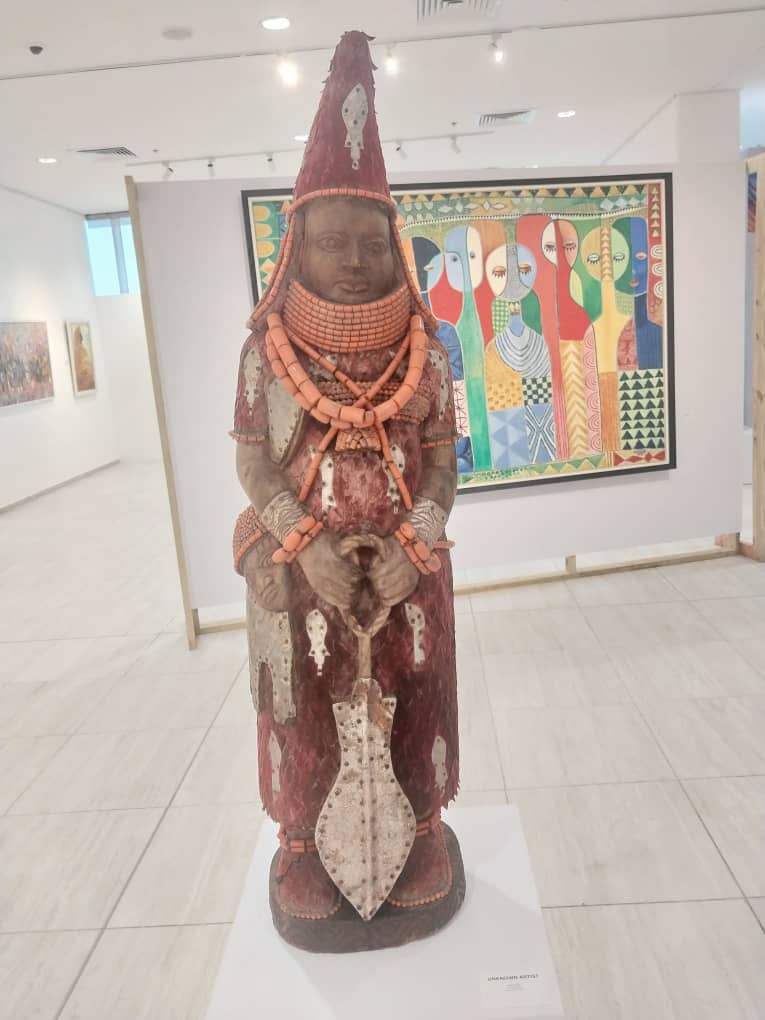
Introduction
Ilé-Ifẹ̀, widely acknowledged as the “Cradle of Yorùbá Civilisation,” holds a paramount position in the cultural and historical fabric of Nigeria and the broader West African region.
Located in the southwestern region of Nigeria, Ilé-Ifẹ̀ represents more than a mere geographical entity; it serves as a reservoir of cultural customs, a hub of profound knowledge, and a testament to the enduring heritage of the Yorùbá community.
The purpose of this initial section is to deeply examine the significant historical and cultural aspects of Ilé-Ifẹ̀, thereby establishing a solid foundation for a thorough investigation of its historical governance and the present-day impact of its royal dynasty.
The central aspect underlying the prominence of Ilé-Ifẹ̀ lies in its distinction as the ancestral homeland of the Yorùbá people. The toponym ‘Ilé-Ifẹ̀’ conveys the profound connotation of ‘House of Expansion’, symbolising its pivotal position as the cradle of Yorùbá civilisation.
The historical roots of this phenomenon can be traced back to antiquity, supported by extensive archaeological evidence pointing to human settlements dating as far back as the 4th century BC.
The urban origins of the city are intricately woven into the rich tapestry of Yorùbá mythology, where its creation narrative elucidates the celestial descent of the deity Oduduwa.
This deity bestowed upon Ilé-Ifẹ̀ both the inaugural human inhabitants and the invaluable endowment of civilisation.
The architectural wonders of Ilé-Ifẹ̀, particularly the ancient city walls, stand as tangible manifestations of its profound historical significance.
These walls, constructed with earthworks and stones, bear witness to the city’s ancient fortifications, with claims suggesting their construction as early as the 11th century.
These structures in question exhibit the strategic importance of the city, potentially fulfilling dual roles in defense and symbolism.
The urban centre is widely celebrated for its elaborate terracotta sculptures and bronze artworks of equal distinction. The artistic artefacts not only serve as a testament to the exceptional skill and artistry of the Yorùbá people but also provide valuable insights into their spiritual and cultural practices.
The renowned sculptures of the Ife heads, distinguished by their remarkable realism, have earned widespread recognition as exemplars of African artistic excellence and are venerated as emblems of the city’s profound cultural legacy.
Ilé-Ifẹ̀ boasts a rich historical legacy characterized by a well-established tradition of monarchical governance. The Ooni of Ife, as the preeminent traditional leader of the Yorùbá ethnic group, holds a central position within both the historical and contemporary Yorùbá cultural landscape.
The profound importance of this royal lineage is firmly ingrained within the Yorùbá belief framework, where the Ooni’s role extends beyond political leadership to encompass a spiritual embodiment.
Consequently, the Ooni serves as a revered symbol, establishing a sacred connection between the populace and their forebears.
The enduring implications of this dual role are significant for both cultural and political dynamics, not only within the specific context of Ilé-Ifẹ̀ but also in the broader Yorùbá diaspora.
Moreover, the cultural heritage of Ilé-Ifẹ̀ showcases remarkable longevity that transcends geographical boundaries. The institution serves as a significant cultural symbol for the dispersed Yorùbá population globally, facilitating interconnections and preserving ancestral customs for Yorùbá communities in Nigeria and throughout the world.
The festivals, rituals, and ceremonies of the city continue to draw a diverse array of visitors, scholars, and practitioners who are eager to establish a connection with their cultural heritage and embrace the fusion of traditional and contemporary elements in Ilé-Ifẹ̀.
The significance of the Royal Dynasty in Yorùbá culture, particularly in the context of Ilé-Ifẹ̀, holds immense weight and should not be underestimated. The concept serves as a fundamental cornerstone that underpins the entirety of Yorùbá cultural, political, and spiritual structures.
Its profound importance resonates not solely within the historical records but also within the present-day Yorùbá community.
Primarily, the Royal Dynasty in Ilé-Ifẹ̀ exemplifies the preservation of Yorùbá tradition. The lineage of the monarchy remains unbroken, tracing its origin back to the mythical Oduduwa, widely revered as the ancestor of the Yorùbá people.
This genealogical heritage transcends mere historical documentation; it stands as a vibrant manifestation of the ancestral connections that intimately link the Yorùbá community to their origins. The Ooni of Ife, in their capacity as the preeminent sovereign within this ancestral lineage, holds a position of profound spiritual and cultural significance.
In the Yorùbá cosmology, the Ooni assumes a multifaceted role that extends beyond mere political leadership, encompassing the sacred responsibility of safeguarding the Yorùbá pantheon of divine entities and ancestral spirits.
The dual nature of the monarch’s role serves to underscore the deeply held belief that the monarch functions as a divine emissary, effectively establishing a connection between the mortal plane and the ethereal realm. This enduring belief system spans centuries and has a profound influence on the various rituals, ceremonies, and practices observed by the Yorùbá community.
The spiritual role of the Ooni transcends the boundaries of Ilé-Ifẹ̀, wielding a significant influence on religious practices and beliefs across the vast expanse of Yorùbáland.
In the realm of governance, the Ooni wields considerable influence. In the annals of history, it is evident that the Yorùbá political structure exhibited a decentralized nature, marked by the presence of a multitude of city-states and kingdoms.
Ilé-Ifẹ̀, renowned as the birthplace of Yorùbá civilization and the esteemed residence of the Ooni, held a significant role as a bastion of moral ascendancy.
When conflicts emerged among the city-states of the Yorùbá, the Ooni often assumed the role of mediator, diligently safeguarding the tenets of justice and thereby fostering a sense of unity within the Yorùbá populace.
Moreover, the Royal Dynasty assumes a pivotal role in the preservation and promotion of culture. The institution serves as the guardian and preserver of the rich cultural heritage encompassing Yorùbá customs, traditions, and folklore. The Ooni’s active participation in cultural festivals, ceremonies, and rituals goes beyond mere symbolism. It serves as a crucial means of preserving and nurturing Yorùbá cultural heritage. Through these practices, the Royal Dynasty in Ilé-Ifẹ̀ effectively ensures the perpetuation of cultural wisdom across successive generations, thereby bolstering the endurance of Yorùbá culture in the face of contemporary challenges.
In the present era, the Ooni of Ife maintains a prominent presence and exercises considerable influence across both conventional and contemporary domains. While the political milieu of Nigeria has undergone significant transformations, the Ooni remains a revered and influential figure, even within the context of the nation’s democratic epoch. The enduring reverence accorded to the Ooni underscores the recognition of their pivotal role in upholding cultural cohesion and serving as a unifying influence within the Yorùbá community.
The Ooni’s endeavors transcend the territorial confines of Nigeria. The global Yorùbá diaspora seeks cultural guidance and a sense of heritage through their association with Ilé-Ifẹ̀.
The Ooni’s involvement in international affairs and efforts to foster connections with Yorùbá communities overseas contribute to the cultivation of a global Yorùbá identity, thereby enhancing the significance of the Royal Dynasty within Yorùbá culture.
Historical Background
The historical context surrounding the Royal Dynasty in Ilé-Ifẹ̀ forms a complex tapestry comprising mythical narratives, legendary tales, and historical records. These elements intricately combine to shape the genesis of this esteemed lineage. To fully grasp the magnitude of this dynasty, it is imperative to explore its profound historical origins.
The lineage of the Royal Dynasty can be traced back to the legendary figure of Oduduwa. According to Yorùbá mythology, Oduduwa is believed to have descended from the celestial realm, either suspended by a chain or originating directly from the celestial expanse.
During this descent, Oduduwa was accompanied by a calabash containing soil and a cockerel.
These elements symbolised the fundamental components required for the creation of the world. Upon his arrival in Ilé-Ifẹ̀, it is postulated that he ingeniously used the soil to fashion the initial expanse of solid ground, thereby engendering the emergence of the Yorùbá populace.
This celestial narrative holds a pivotal position within the Yorùbá cosmogony, emphasizing the idea that the Royal Dynasty of Ilé-Ifẹ̀ possesses a divine lineage, establishing it as the birthplace of Yorùbá civilisation.
The establishment of the Royal Dynasty is closely connected to the rise of Ilé-Ifẹ̀ as a prominent city-state in the present-day southwestern region of Nigeria, as evidenced by historical records. The archaeological record provides compelling evidence, dating human habitation in Ilé-Ifẹ̀ as far back as the 4th century BC, which predates the establishment of the dynasty in question. Throughout its development, Ilé-Ifẹ̀ underwent a remarkable transformation, evolving into a prosperous metropolis distinguished by its refined society and characterized by notable artistic and cultural accomplishments.
According to historical accounts, the earliest documented ruler of Ilé-Ifẹ̀ is conventionally attributed to Oduduwa, a figure of both mythical and historical significance, thus establishing him as the first ruler. It is imperative to recognize that the historical veracity of these early monarchs often spark scholarly debate given the paucity of extant historical documentation from that era. Nevertheless, the profound importance of Oduduwa, whether regarded as a historical persona or a mythical progenitor, remains indisputable as the originator of the esteemed Royal Dynasty.
With the increasing prominence of Ilé-Ifẹ̀, there was a corresponding growth in the influence and power of its monarchy. The rulers of Ilé-Ifẹ̀ not only had political dominion but also assumed the role of spiritual guides. The Yorùbá people regarded them as celestial mediators, responsible for safeguarding the well-being of their community and upholding a state of equilibrium between the physical and metaphysical realms.
The merging of political and spiritual power served to fortify the significance of the Royal Dynasty, as it was widely believed that they embodied the very essence of Yorùbá culture and tradition.
The Royal Dynasty of Ilé-Ifẹ̀ exerted significant influence within the political milieu of the Yorùbá city-states. As a spiritual and cultural hub, Ilé-Ifẹ̀ had a profound impact on the surrounding regions. When conflicts emerged among the Yorùbá city-states, the Ooni of Ife, in their capacity as the preeminent leader of Ilé-Ifẹ̀, often assumed the role of mediator, diligently upholding the principles of fairness and solidarity within the Yorùbá populace.
The political influence observed stands as a testament to the deep historical significance of the Royal Dynasty in upholding and preserving the cultural unity of the Yorùbá people.
The historical narrative of Ilé-Ifẹ̀ is characterized by a complex tapestry, intricately woven with the threads of tradition, power dynamics, and the enduring legacies of its lineage of monarchs and prominent individuals. This artefact provides a captivating insight into the antiquated political structure of the city and its gradual evolution over time.
The royal lineage of Ilé-Ifẹ̀, commonly known as the Ogboni rulers, can be traced back to the legendary figure of Oduduwa. Oduduwa is revered as the progenitor of the Yorùbá people and is recognized as the inaugural ruler of Ilé-Ifẹ̀.
In Yorùbá mythology, Oduduwa, a celestial being, descended to become Ilé-Ifẹ̀’s first monarch, symbolizing the origin of the Royal Dynasty. Also, the lineage of Ilé-Ifẹ̀’s monarchs includes notable figures like Oranmiyan, whose historical significance lies in his reputed role in extending the city’s influence beyond its territorial confines.
Oranmiyan is widely acknowledged as the progenitor of the illustrious Oyo Empire, a formidable Yorùbá realm that flourished in the geographical area for an extended duration.
The expanding influence marked a pivotal moment in the historical narrative of both Ilé-Ifẹ̀ and the Yorùbá community, highlighting the profound influence of the city’s esteemed royal lineage on the wider Yorùbá political milieu.
One notable individual in the historical narrative of Ilé-Ifẹ̀ is Obalufon II, the progeny of Oduduwa, who is highly esteemed for his noteworthy contributions to artistic expression and cultural enrichment. It is widely acknowledged that he played a pivotal role in advancing terracotta and bronze sculptures, which are considered emblematic of the exceptional artistic achievements of the Yorùbá people.
The enduring legacy of Obalufon II is manifested through the renowned Ife head sculptures, which serve as exemplars of the exceptional artistry of that era and continue to be revered as some of the most exquisite manifestations of African artistic expression.
Falola gave the keynote address at the International Conference on “Ile-Ife and Yoruba Civilisation: The Nexus Between Tradition and Modernity”on October 13, 2023
In recent times, the political structure of Ilé-Ifẹ̀ was distinguished by a monarchical system that incorporated both divine and hereditary aspects. The Ooni of Ife, in his capacity as the paramount ruler, wielded the utmost authority. Nevertheless, it is imperative to acknowledge that the king’s authority did not manifest as an absolute monarchy. Rather, his governance was subject to the influence of a council comprised of esteemed chiefs, among whom the Ogboni society held considerable sway.
This advisory body played a pivotal role in providing counsel and support to the king in matters pertaining to the administration of the city. The council system is a manifestation of the Yorùbá people’s profound commitment to participatory decision-making and the significant role of consensus in the realm of governance.
Furthermore, the political framework exhibited a decentralised nature, characterized by the presence of distinct wards and quarters within the urban landscape. Each of these areas was governed by their respective chiefs and councils.
This particular system facilitated the establishment of regional self-governance while concurrently acknowledging the supreme jurisdiction of the Ooni. Also, it can be argued that this phenomenon played a vital role in fostering a profound sense of communal cohesion and collective identity among the inhabitants of Ilé-Ifẹ̀.
The political and social framework of Ilé-Ifẹ̀ was further shaped by the tenets of equity and impartiality. The city’s esteemed reputation in upholding these principles played a critical role in facilitating the resolution of conflicts among Yorùbá city-states, thereby strengthening its position as a moral and political arbiter in the region.
Falola gave the keynote address at the International Conference on “Ile-Ife and Yoruba Civilisation: The Nexus Between Tradition and Modernity”on October 13, 2023
To be continued.






